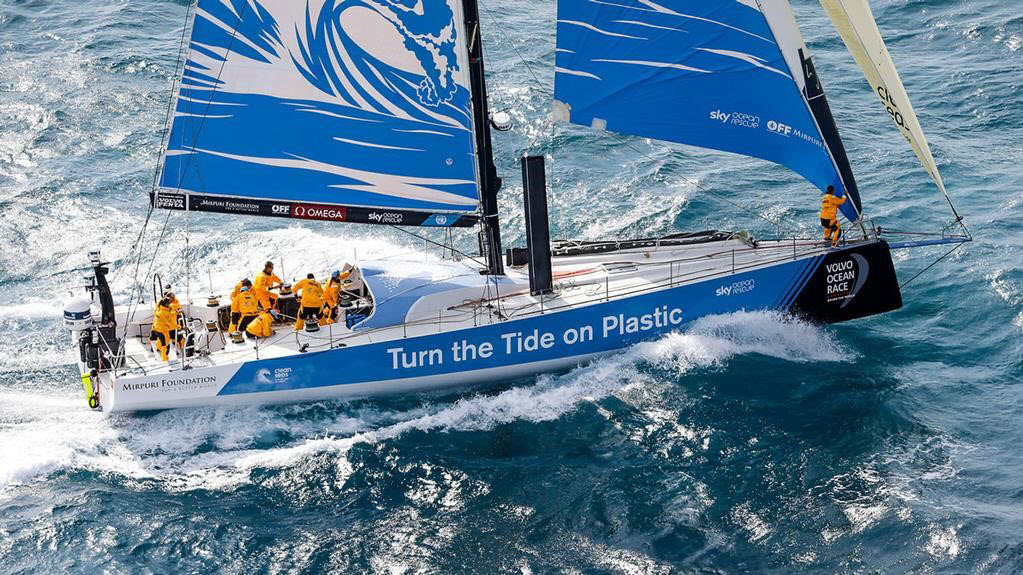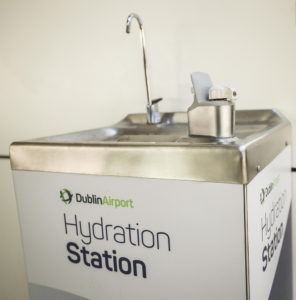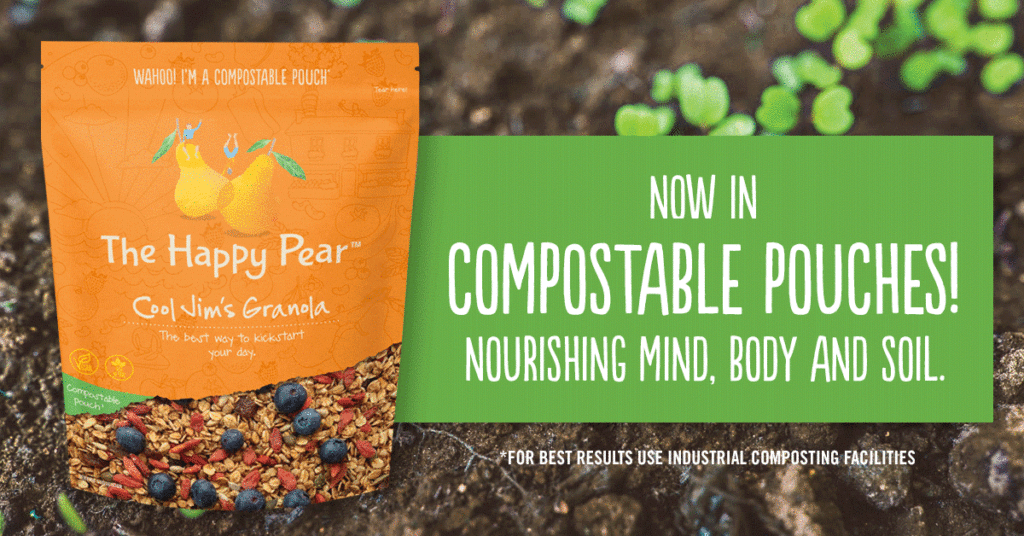In the past, many brands and indeed consumers opted to stay neutral on certain causes and issues to avoid retaliation from others.
That mentality has changed and now it appears that everybody wants to feel like they’re a part of something bigger. This is not just a millennial or generation X thing, it’s across all demographics.
Whether it’s by supporting a local/global cause or living a particular lifestyle, many of today’s consumers are actively seeking to make a difference.

I’ve witnessed this myself on a personal level. I’m a sailor and its shocking to hear about the sheer volume of plastic that ends up in our oceans – according to Sailors for the Sea, 8 million tons of plastic enters the ocean from the land each year – to put this into perspective that’s equivalent to about 1.5 million cars! I’ve been inspired by initiatives like turn the tide on plastic and it has had a big impact on my own personal habits when it comes to plastic.
So what has this got to do with Marketing?
 The desire to make a difference is now highly reflected through consumers’ behaviours and purchasing decisions. In my own example I have become much more aware of brands that help me to do the right thing and this has definitely influenced my buying behaviour.
The desire to make a difference is now highly reflected through consumers’ behaviours and purchasing decisions. In my own example I have become much more aware of brands that help me to do the right thing and this has definitely influenced my buying behaviour.
For example, when I travel, I always carry an empty water bottle, which I like to fill when I clear security. If the airport has an hydration station then it gets the thumbs up. Dublin Airport recently launched a sustainability programme to include clearly marked hydration stations around the airport. Initiatives like this have helped transform their brand from a stuffy public sector image to a dynamic progressive brand that is in tune with its customers. When I tried to do this on a recent trip through Amsterdam’s Schiphol airport I had to refill my water bottle in the men’s bathroom – not exactly the same experience!
Interestingly when I see the changing attitudes and habits around single use plastic water bottles, it makes me wonder about the future of the bottled water industry. I think it is headed for significant disruption and it will be interesting to see how bottled water brands reinvent themselves – another blog post perhaps 🙂
Another example of a brand that has had an impact on my purchasing habits is the happy pear. I’ve always been a big fan of their muesli product, but I stopped buying it because they sold it in hard plastic non-recyclable tubs. They have now released a new fully recyclable compostable pouch and I’ve started buying it again and am a renewed-fan!
The key take-away here is that my attitude towards plastic is obviously shared by an ever-increasing number of people. Brands who have an opportunity to do something positive about causes like this will reap significant rewards with their existing customers and help them grow market share.
Consumers who are passionate about their causes are constantly on the lookout for purpose-driven brands and businesses who also advocate for and support the same causes as they do. This new movement has paved a way for what we know today as purpose-driven marketing or cause marketing.
What is a purpose-driven brand?
A purpose-driven brand goes beyond the corporate bottom line and is fuelled and centred around a particular cause, mission, purpose or vision.
As I mentioned earlier, this is a relatively new movement that many businesses and brands are centering their business models around to connect with their audience. According to a Forbes interview, a purpose-driven brand is a successful brand, and a brand’s purpose should be the centre of attention in order to be successful. We have now entered an era of “radical transparency” and believe that customers are, in fact, more than just buyers.
As a result, brands are encouraged to adhere and be more committed to their customers’ beliefs. This is where purpose-driven marketing plays an integral part in your business’ brand marketing strategy.
Why is purpose-driven marketing important?
63% of global consumers prefer to purchase products and services from purpose-driven brands. Moreover, over 70% of customers are more likely to recommend a brand that supports a good cause.
OK – but how do you become a purpose-driven brand?
Here are a few tips from 3 innovative brands that are leading the way.
1. Find a mutual cause both you and your audience can connect with.
One of the most effective ways that you can use purpose-driven marketing to connect with your audience is to find a cause that matters to them. At the same time, make sure that the cause also aligns with your brand.
Patagonia is a prime example of a purpose-driven brand that effectively tailors their marketing efforts around a cause that their audience can deeply connect with. Patagonia’s mission is to save the planet in the midst of the current climate crisis we are in. They see this as an opportunity to build the best products while doing no unnecessary harm to the planet. Their business is centred around protecting nature and this is a cause that their audience cares deeply about.
It’s extremely important that you get to know your customers and what they care about. Using data-driven creativity can help map out your customer journey and deliver the experience that your target audience expects. The right data can make all the difference, and finding a cause that your audience can connect with, encourages them to get involved with your brand’s mission.
2. Drive social change by being transparent with your audience.
Consumers want to know that the brands they are supporting have a real impact.
Purpose-driven brands need to be transparent with their audience through their marketing efforts in order to prove that they are truly driving social change. In other words, this means reporting on the impact your brand has made on the cause you are supporting. Many brands do this by capturing and collecting data to communicate the impact it has made over a certain period of time.

As a marketer, take this as an opportunity to create original content by reporting on the impact that you and your customers have made together. For example, the TOMS Stories website displays first-hand how their customers’ purchases are creating change and making an impact. You can read up on the cause behind their Unity Collection, which is dedicated to equality and inclusion. TOMS’ content marketing strategy is what makes up their strong narrative as a purpose-driven brand. This is significant because it can help build stronger brand trust and loyalty in the long run.
3. Always realign your purpose-driven marketing efforts back to your brand.
Keep in mind that purpose-driven marketing is a two-way street.
Why are you doing what you’re doing?
Not only do your marketing efforts impact your customers, but they also define your business as a whole.

Take a look at the adidas and Parley product line for example. Adidas’ purpose-driven marketing efforts for this collaboration are centred around the ocean plastic epidemic.
Their campaign video takes us on a journey and narrates a compelling story about how ocean plastics are negatively affecting our oceans’ ecosystem. Adidas effectively realigns their efforts to their brand by spinning the problem into a solution and creating high-performance sportswear that is made out of plastic. The lesson here is that the cause you are supporting becomes a part of your brand narrative, which is a driving factor that determines who will support, buy from, and invest in your business.
At the end of the day, not every company is obligated to go as all-in as brands like Patagonia, TOMS or adidas. However, working towards a common goal or a shared set of values with your customers creates a strong emotional link with a huge impact. Ultimately, this will help drive your purpose-driven marketing efforts forward and continue to build a community around issues and causes that matter.



Stay Connected